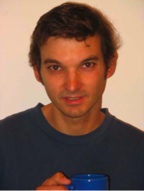
| |
| calendar |
| speakers |
| resources |
| blog |
| contact |
| David Toczyski, Ph.D. |
Marin Science Seminar Presentation: “X-rays Don't Really Give you Superpowers: How Cells Fix DNA Breaks” Getting a tan? Having a smoke? Getting an X-ray? To varying degrees, all of these things cause damage to your DNA. Moreover, your DNA is unavoidably damaged all of the time as a consequence of normally physiology. Fortunately, humans have evolved many mechanisms to repair this DNA damage. But, before a cell can repair DNA damage, such as a broken chromosome, it has to know that the chromosome has been broken in the first place. How do cells do this? Download the flyer here. Dr. Toczyski is a Professor of Biochemistry and Biophysics and the Director of the Cell Cycle Regulation Program at the University of California, San Francisco. |

